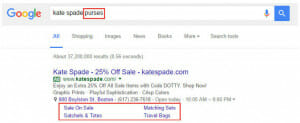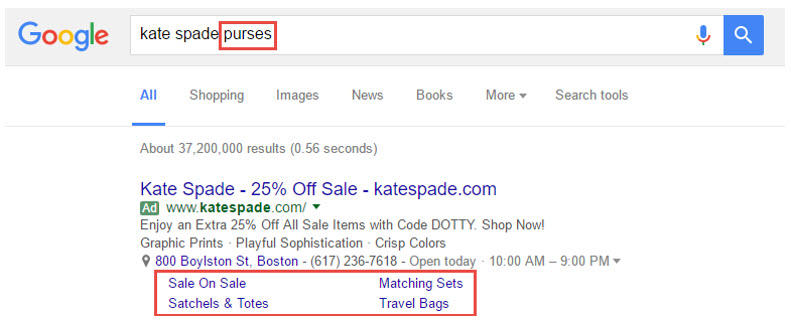One of the main and easiest improvements PPC advertisers can make to their PPC search advert is through including the use of ad 
Most advertisers will use site link extensions to link to internal pages (pages within the website already). There is also the possibility, though, to link to social media websites. This includes the following:
- YouTube
- Google+ (although Google+ is a discontinued social media platform, so it wouldn’t be recommended).
The problem with this, though, for advertisers, is that it is a little more difficult to get the conversion they want from each of the social media sites, if they chose to link to them in their site link extensions. Sites like Facebook, Twitter and LinkedIn make it very easy for the web user to get distracted, which is not in the advertiser’s intentions. YouTube is the procrastination king, whilst Instagram makes it very difficult to convert, by only having clickable links in the profile bio area.
Additional Links in Site Links Extension
However, Google has recently increased the number of external links that can be used in site link extensions. The new policy now reads:
While links should normally point to the same domain as the ad URL, we do allow links to point to third-party sites, under limited circumstances. Some examples includes links to select online retailers, a Facebook page, Twitter account, YouTube video, LinkedIn profile or Instagram account. In such cases, the link text must be descriptive of what someone would find at the link destination. For example, “Watch our YouTube video” should lead to your video on YouTube.
This does mean that there is the possibility to link to third-party online retailers and businesses. The current two that can be included are:
- Amazon.com
- BestBuy.com
When either of these retailers are used in the site link extension, it must be clear that the web user is going to land onto either website, such as ‘Buy now on Amazon.com’ etc.
What does this mean for advertisers?
Pointing web users to third party retailers could make or break a PPC campaign, especially for small businesses.
Getting web users to buy direct, especially if the brand isn’t strong and upcoming, is usually a difficult process. As well as selling whatever you are trying to sell, you also have to evoke confidence to the web user in the brand.
Allowing site links to point to the likes of Amazon and BestBuy eradicates this worry, and will, no doubt, make it easier for web users to purchase products through a platform they are aware of. For this reason, it has the potential for small businesses to make a big difference.
The only problem that might occur comes with the return on investment – Amazon and BestBuy both will reduce the profit margin when sold through their website. Therefore, in order to maintain the same profits as before through PPC, you might have to sell many more to compensate this cut in profit.



